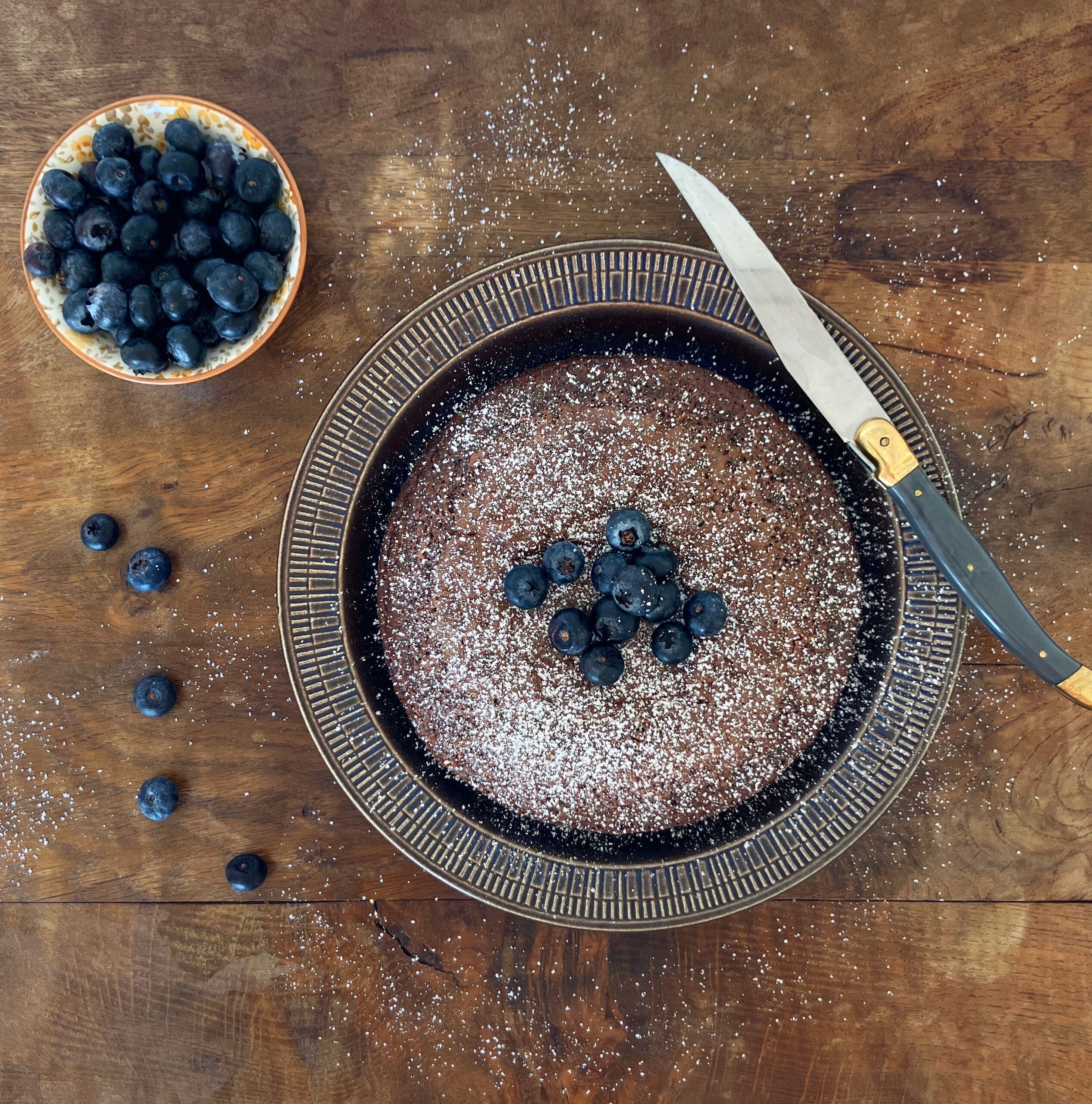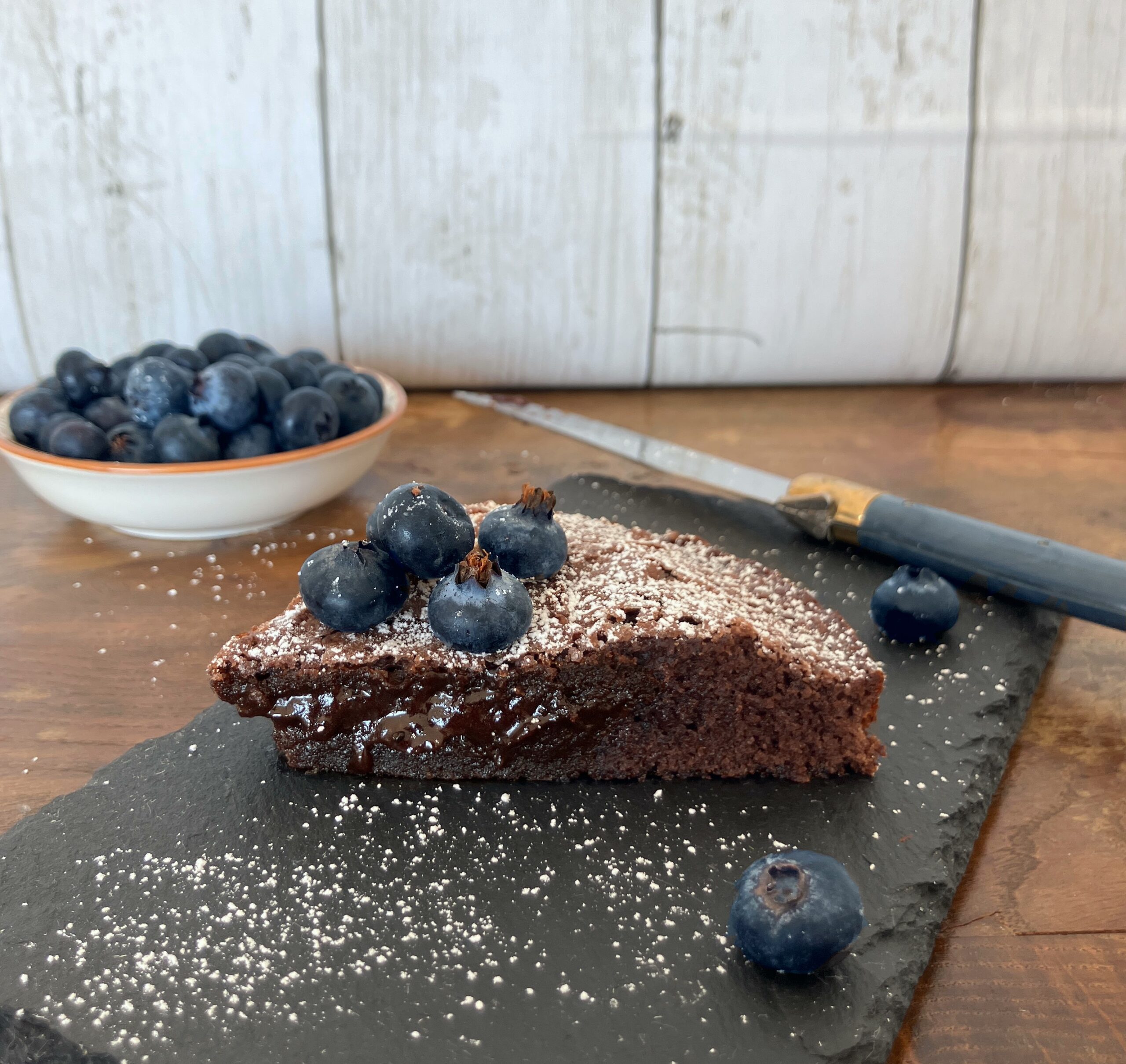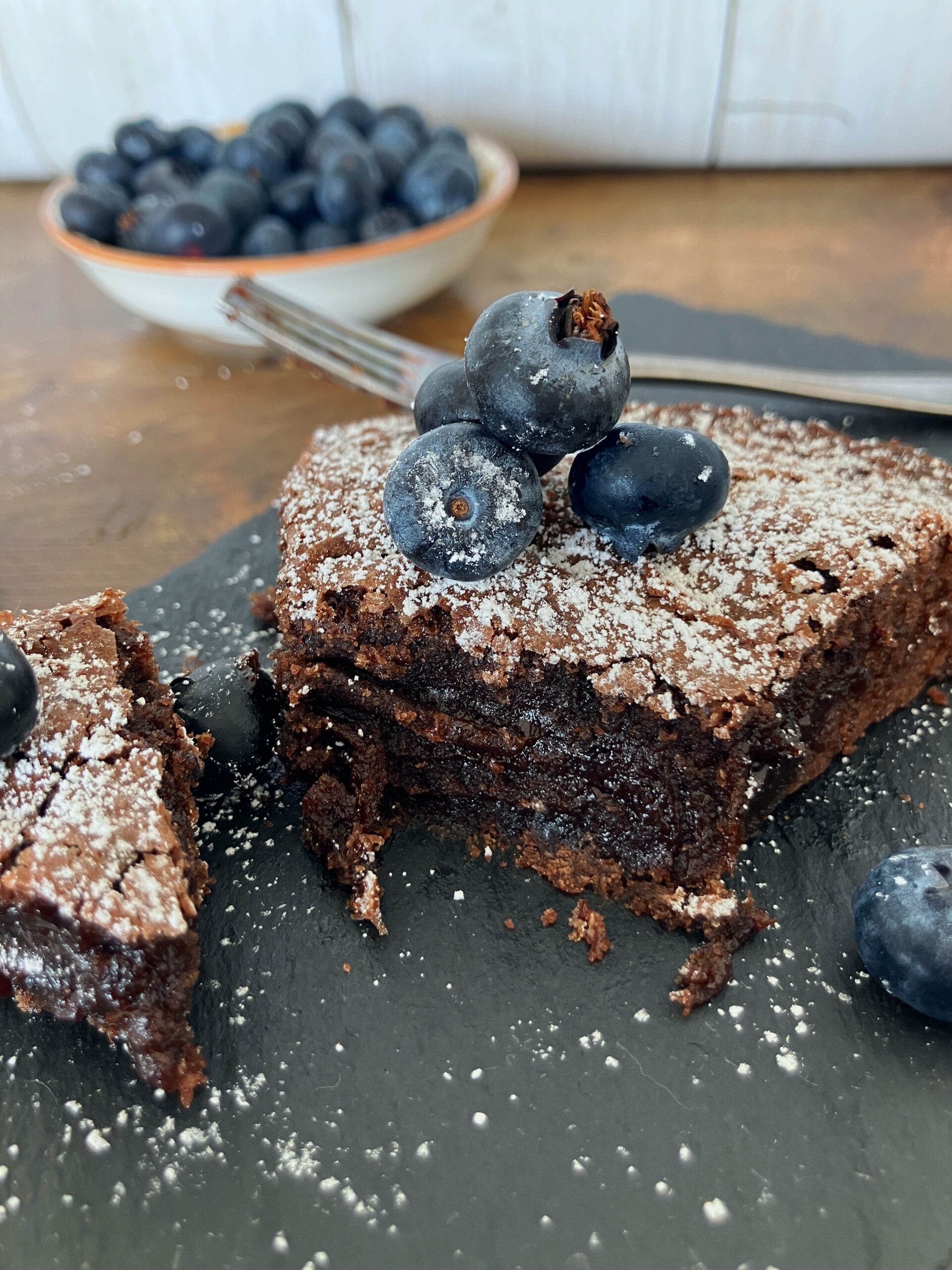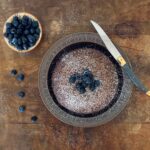How to make a Classic Swedish Kladdkaka
How to make classic Swedish Kladdkaka is a simple, easy to follow guide on how to make the perfect kladdkaka. You will be whipping up one of Sweden’s favourite desserts in no time.
I’m in the Amazon Associates program, and some of the links in this post are affiliate links, which means I may earn a small commission if you click and buy. Please read my disclosure and privacy policy for more information.
_____________
Here is my tutorial on how to make a classic Swedish kladdkaka.
I’m offering a few tips, a smattering of interesting information, a light-hearted dose of British humour, and my extensive personal experience of eating and baking way, way, way too many kladdkakor.
What is kladdkaka?
Well, simply put, kladdkaka is one of Sweden’s most loved cakes. Perhaps even the most loved cake.
Directly translated it means sticky cake: kladda/kladdig = messy or sticky and kaka = cake. Oh, and you don’t need to call it a kladdkaka cake. That would be like saying, sticky cake cake. Sooo good, you need to say it twice. And, while I am being all grammatically correct, it’s kladdkaka for one cake, kladdkakor if its plural.
Traditionally, kladdkaka is very thin, flat cake, often with just a sprinkling of icing sugar. Of course, I invariably do things in my own way, and up until now, I’ve never made a classic kladdkaka. Although mine are flat, they are rarely thin (greedy, anyone?).
Kladdkaka is intrinsically Swedish, and there really is nothing else like it. However, some countries do have similar cakes. Kladdkaka often gets compared to a brownie, and I can see why that might happen. A cold kladdkaka has a similar chewy texture. However, I feel that they are quite different (unless it’s a very fudgy brownie). The French molten (or lava) cake is also very similar to an underbaked kladdkaka.
Where did kladdkaka originate?
As with most food, the exact origin of kladdkaka is a little hazy. Some believe it came about due to a lady called Margareta Wickman who visited Paris in the 1970s. She was totally wowed by a cake she tried, got hold of the recipe and then recreated it in Sweden.
Another suggestion is that baking powder was difficult to get hold of during World War II, and necessity meant that it was omitted from cake recipes. Or, the the fun idea that someone once baked a cake but forgot to add the baking powder, and the recipe for kladdkaka was born.
I prefer the latter, probably because I’ve done it. Once, I made a cake, realised after ten minutes I’d forgotten the baking powder, took it out of the oven, stirred said baking powder in, returned it to baking, and ended up with the softest sponge cake ever. I’m determined, if nothing else.
Whatever the origins, kladdkaka has been around for several decades, reaching popularity in the late 70s, but really hitting the heights of success in the early 90s, when cafe culture in Sweden boomed.
It’s so popular, that Swedes have their very own kladdkaka day, celebrated on 7th November. This year, the estimate is that around 2 million kladdkakor will be eaten. That’s a hefty amount of cake, especially considering Sweden has just 10 million inhabitants.
Why is kladdkaka sticky?
Well, because if it wasn’t, we couldn’t call it kladdkaka now, could we?
Seriously though, the cake gets its name because it’s sticky and messy. Try eating it with your fingers, I dare you. Especially my incredibly gooey white chocolate and lemon kladdkaka.
Kladdkaka is underbaked (sometimes a lot, sometimes less so) which results in anything from a fudgy consistency to all out molten madness. However, underbaking is not the only reason why kladdkaka is dense and flat.
The aim when making kladdkaka is to quickly mix the ingredients, and not over-work the batter (see below). This means that fewer air bubbles find their way into the cake. Normally, that would be a complete catastrophe, and the last thing you’d want to happen to a cake, but for kladdkaka, it’s perfect.
Lastly, something that sets kladdkaka apart from regular cakes is that there is no baking powder. It’s dense, not airy. So, peeps, a sticky kladdkaka is all about the chemistry.
The ingredients of a basic kladdkaka
Another reason why kladdkaka is so well loved by the Swedes is its sheer simplicity. Swedes don’t mess about in the kitchen: they have no-nonsense recipes that do what they are supposed to do, often using cupboard staples. A basic kladdkaka’s ingredient list is not at all extensive, and usually includes:
- eggs
- butter
- sugar
- flour
- cocoa
- vanilla sugar
Vanilla sugar (vaniljsocker) is very common in Swedish baking. In fact, it is much harder to get hold of vanilla extract (or it’s very expensive). For a recipe that calls for Swedish vanilla sugar, just replace with the same amount of vanilla extract.
Vanilla sugar here is not regular granulated sugar infused with vanilla, but instead has an clumpy icing sugar consistency, a faint beige hue, and fairly strong (sometimes even artificial) vanilla flavour.
How can you achieve the perfect kladdkaka?
There really is no such thing as a perfect kladdkaka. It’s all about preference. However, whether you want your cake runny or firm, the following tips will help you achieve a beautiful, classic Swedish kladdkaka:
-
Don’t overwork the batter
The denseness comes from not over-working the cake batter. Although I adore my food processor, and sing its virtues at every opportunity, I don’t use it for my kladdkakor. A simple whisk is all that is needed, with gentle movements to ensure all ingredients are incorporated, and the batter is relatively smooth. The butter will already be melted, so there is no need to go heavy handed.
Too much air will make the cake lighter, and could even cause it to rise too much, even without baking powder. There are eggs in the recipe, after all. The butter and sugar means it would be a delicious cake, but not kladdkaka.
The awesome thing about this classic Swedish kladdkaka is that everything can be thrown in the same pan, so the clean up is less labour intensive, too (well, that is unless you bake like me and use every bowl and utensil in the house, sprinkling the ingredients into every spare crevice as you go).
-
Baking
So how long should a kladdkaka be baked for? This is a crucial question, and the answer will depend on how gooey you want it. I will be honest, getting the perfect texture for you may take some practice. Start off with this recipe for a classic Swedish kladdkaka, and then adapt it to suit you.
The great thing is, it doesn’t matter if it’s a little firmer or runnier than you had anticipated the first few tries, because you will quickly see where you need to adapt the baking times. Kladdkaka is delicious underbaked or overbaked. Seriously.
It also depends on the recipe (and its ingredients), the oven temperature, and how big your cake tin is. So, there are quite a few variables to take into consideration.
Although the middle of the kladdkaka is underbaked, the outsides should be cooked perfectly, with that chewy consistency similar to a brownie.
The first few times I made kladdkaka, I over-baked it. There is something a little scary about taking a cake out of the oven that still jiggles when you shake it. It was always delicious, but not quite what I wanted. Each time I baked it, I adjusted the temperature accordingly until I got it right. Experimenting is key, and as I’ve said, you can’t go wrong, even if it does go wrong.
-
Keep an eye on it
It’s not surprising that kladdkaka is a quick bake. A smaller, thinner cake, like the one I baked for this recipe, should be popped into an oven pre-heated to 175°C (350°F). Checks should start at around the 10 minute mark. At this point, the top will feel baked and the edges will be cooked, but the middle will wobble like a jelly on steroids. If you are aiming for a very molten lave type cake, take it out of the oven at this point.
As the cake continues to bake, you will see the firmer edge creeping towards the centre. Stop when you feel it is the right texture for you (remembering that kladdkaka will firm up as it cools, especially if placed in the fridge). I baked mine for 15 minutes in total, doing the wobble test a couple of times. Watch it closely as one minute can make the difference between sticky and set. Believe me. I know.
By the way, your kladdkaka will sink. Have a look at the picture below which clearly shows the sinkage. Your kladdkaka might collapse, entirely (especially when you cut into it). It’s kind of designed that way, and a sunken kladdkaka means you’ve done something right. As mentioned, it isn’t a light, airy cake; it is dense and gooey. A cake that doesn’t sink means it’s baked all the way through, or you over-mixed a little when preparing it.
-
Refrigeration
Kladdkaka is traditionally served straight from the fridge. This means that the underbaked centre has the opportunity to firm up a little. Refrigeration will also make the kladdkaka chewy, especially on the edges.
The photo below was taken when the cake had been out of the oven for around 30 minutes (and still a tad warm). You can clearly see where the cake has baked at the edges, and where it is still underdone:
This one was taken after the cake had been in the fridge for one hour. Although you can see it is still fudgy, it has firmed up quite a bit. If you left the kladdkaka in the fridge overnight, it would have the texture of a chewy brownie.
Is kladdkaka always chocolate?
Although chocolate is by far the most common type of kladdkaka, you will find every other flavour under the sun. My latest kladdkaka (which has been quickly elevated to one of my faves) was lime and blackberry.
One of the best things about kladdkaka is its simplicity and adaptability, so once you have the base ingredients, you can amend it quite easily. For example, you could make a seasonal kladdkaka just by adding a touch of mixed spices.
This recipe aside, I always use dark chocolate and coffee in all of my kladdkakor recipes as I find they both add a depth of flavour that elevates the cake. Well, I actually never make any kind of chocolate cake without first adding coffee to the batter. If you have never tried it doing this, give it a go.
What do you serve with kladdkaka?
Kladdkaka is usually served with nothing more than a light sprinkling of icing sugar, and to be honest, that’s how I prefer it. That being said, vanilla ice-cream is amazing on warm, gooey, fresh out of the oven, kladdkaka. And, if it’s cold, a dollop of whipped cream is perfect.
As an alternative to cream or ice cream, try a drizzling of caramel, a sprinkling of roasted nuts or a bunch of summer berries.
A thin classic Swedish kladdkaka also makes a great base for a more elaborate or fancier dessert. Top it with luscious, creamy cheesecake, or crunchy Tosca topping. If your intention is to top the kladdkaka with something, it’s better to bake the cake a little longer so that you have a firm base. My fudgy chocolate kladdkaka was deliberately baked longer just so that it could carry the fudge topping.
FAQ
- Does kladdkaka freeze well?
Yes, kladdkaka freezes incredibly well. If I am looking for a quick dessert, I will often pick up a kladdkaka in the frozen aisle at the supermarket. Obviously, a frozen kladdkaka will never be as gooey as a cake straight out of the oven.
- Can you make kladdkaka cupcakes?
Yes, and I have, several times. Just pour the batter from this recipe into however many cupcake cases you need. Remember, the cupcakes won’t rise a great deal, so you can fill the cases up as much (or as little) as you want. A deep kladdkaka cupcake is very rich, and a little goes a long way.
If you’re looking for a recipe specifically made for smaller cakes, try my kladdkaka cupcakes with fudge topping, or triple chocolate kladdkaka muffins.
- Can you make kladdkaka gluten free?
Yes! I’ve already sung the praises of the cake’s adaptability, and the kind of flour you can use is no exception. Now, I use spelt flour to make my kladdkakor, but in the past have often used regular flour, or even a gluten free flour blend. Again, the cake isn’t meant to rise or be airy, so there is no need to worry about having gluten in the flour.
Phew. So that’s it. Making a kladdkaka is one the easiest things you can make. Try it for yourself. But before you do, check out how I make my milk chocolate version:
How to make a Classic Swedish Kladdkaka
Ingredients
Cake:
- 75g (⅓ cup) butter
- 130g (⅔ cup) sugar
- 2 eggs (small)
- 10g (1 + ¼ tbs) cocoa
- pinch of salt
- 1 teaspoon vanilla sugar (or extract)
- 40g (⅓ cup) flour (see note 1)
Decoration:
- icing sugar (for sprinkling)
- berries for decoration (optional)
Instructions
- Pre-heat the oven to 175℃ (350℉). Grease and line an 18cm (7") springform pan.
- Heat the butter in a pan until about half of it has melted.
- Remove from the heat, and continue to stir until all of the butter has melted.
- Add the eggs and sugar and quickly whisk just until everything is combined.
- Add the other ingredients and whisk quickly, just until everything is combined.
- Pour into the prepared pan and bake for around 15 minutes. Please read my main post about how to bake a kladdkaka, and when to know it's ready.
- Sprinkle with a good helping of icing sugar. Serve warm as it is, or allow to cool. Top with ice-cream or cream, if you fancy.
Notes
- You can use regular or even gluten free flour in place of spelt flour without any need to alter the other ingredients (I have made this recipe with all of them).






2 thoughts on “How to make a Classic Swedish Kladdkaka”